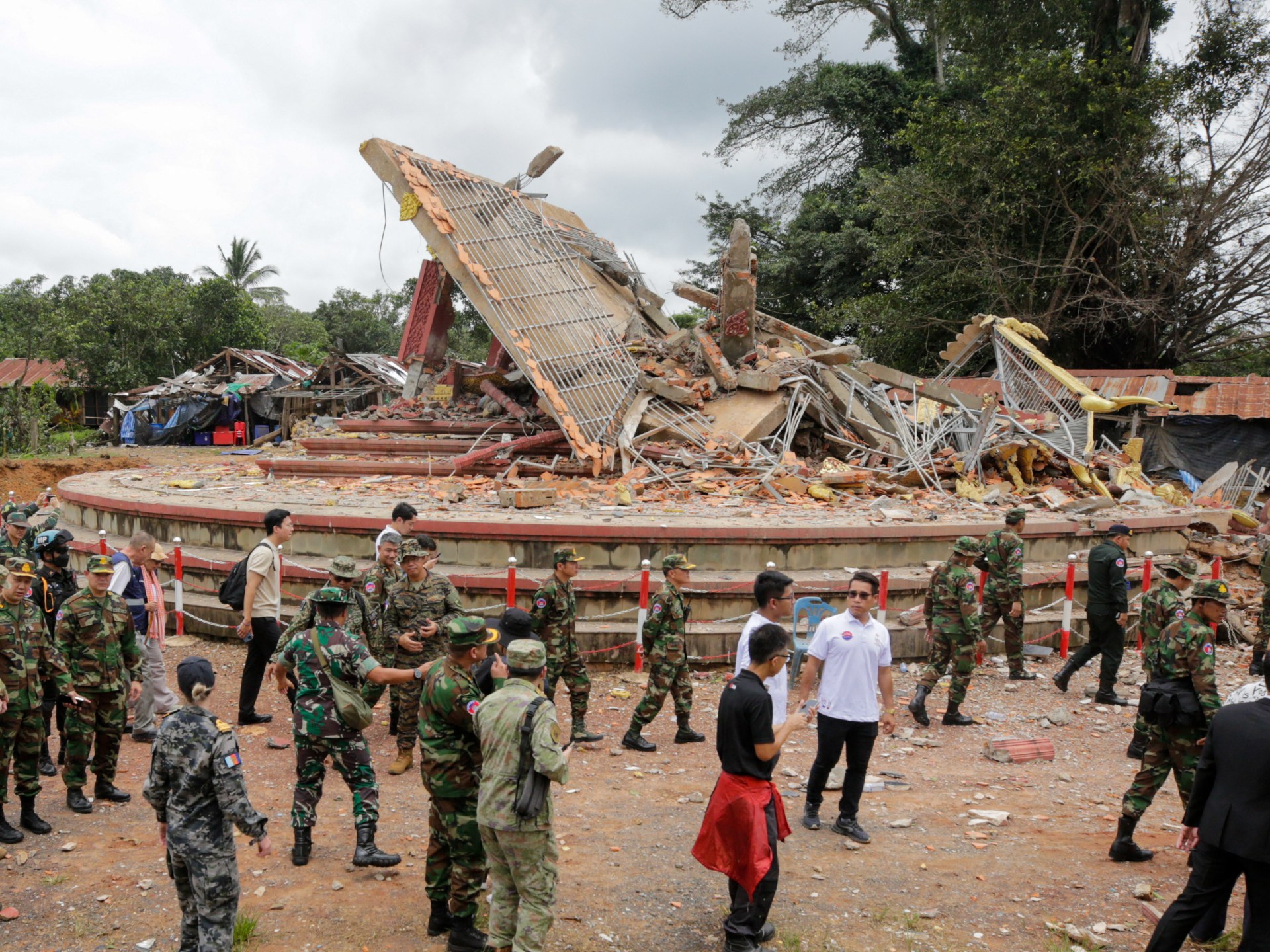A truce to end deadly clashes has been in place, in part, as a result of economic pressure from US President Donald Trump, but also because of a ceasefire between Thailand and Cambodia, which has been in place as border tensions continue.
Following nearly a week of hostilities that resulted in at least 38 mostly civilian deaths and nearly 300,000 more displaced people, the two neighbors agreed to an “immediate and unconditional” ceasefire at a meeting in Malaysia on Monday. However, Cambodia quickly challenged Thailand’s army’s claims that it had launched attacks in various locations early on Tuesday, which Cambodia refuted.
The US is scheduled to make new trade tariff announcements days before the ceasefire. With a 36% tariff on goods from both countries coming into effect on Friday, Cambodia and Thailand are two of the nations most likely to be hit.
If hostilities continued, Trump had warned that the US might not sign any trade agreements with either nation, giving both countries a glaring defense for putting an end to the hostilities.
In the hours immediately following the ceasefire’s implementation, some sporadic fire was anticipated. A new clash has erupted at one of the locations where there has previously been intense fighting, according to a Thai government statement late on Tuesday. The Thai army claimed there were no longer any use for heavy artillery after reports of gunfire continued into Wednesday morning.
The Thai military “is currently responding and controlling the situation,” according to Jirayu Houngsub, a spokesperson for the country’s prime minister’s office, in a mountain range near Thailand’s Sisaket province, in a text message sent to journalists.
After military leaders from both sides met, Thailand’s army claimed the morning fighting had ended. Prior to a joint border committee meeting in Cambodia on August 4, army spokesman Major-General Winthai Suvaree said they agreed to halt troop movements, prevent escalation, and set up coordination teams.
Tea Seiha, the Cambodian defense minister, acknowledged the “incidents” that occurred during the ceasefire’s implementation but emphasized that the army of the country continued to support the truce.
“My home is not as simple to live in.”
Along the border, there were signs of calm, with some of the tens of thousands of people who had been displaced by the fighting returning to their homes.
However, Cambodia’s northwestern border residents were still awaiting their turn to return home.
Meun Saray, a 45-year-old woman living in a tarpaulin shelter close to Samraong, the capital of Cambodia’s Oddar Meanchey province, told the Reuters news agency, “If they say my village is safe to return then I would go back home and reunite with my family.”
According to Meach Sovannara, the leader of the opposition New Generation Party, the town is directly south of the O Smach border crossing, where shelling and gunfire can be heard on Monday afternoon. Some local villagers were hurt after their homes were struck by stray bullets.
Over their 800-kilometer (500-mile) border, Cambodia and Thailand have previously engaged in conflict. Five Thai soldiers were hurt when a landmine explosion along the border on Thursday caused the fighting to start. Since May, tensions have grown in Thailand as a result of a Cambodian soldier’s death in a confrontation that sparked a diplomatic rift and sparked a tense internal debate.
According to some analysts, the ceasefire is still unclear and complicated politically.
If the Thai government doesn’t agree to lower US tariffs, Kokthay Eng, a researcher in Cambodia, warned that the ceasefire might not last.
Source: Aljazeera

Leave a Reply